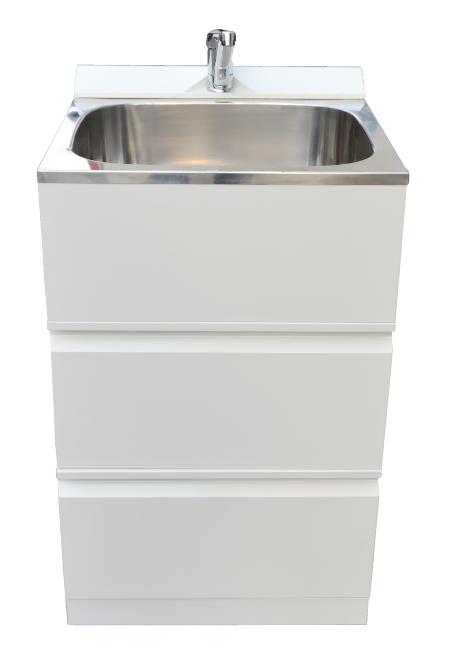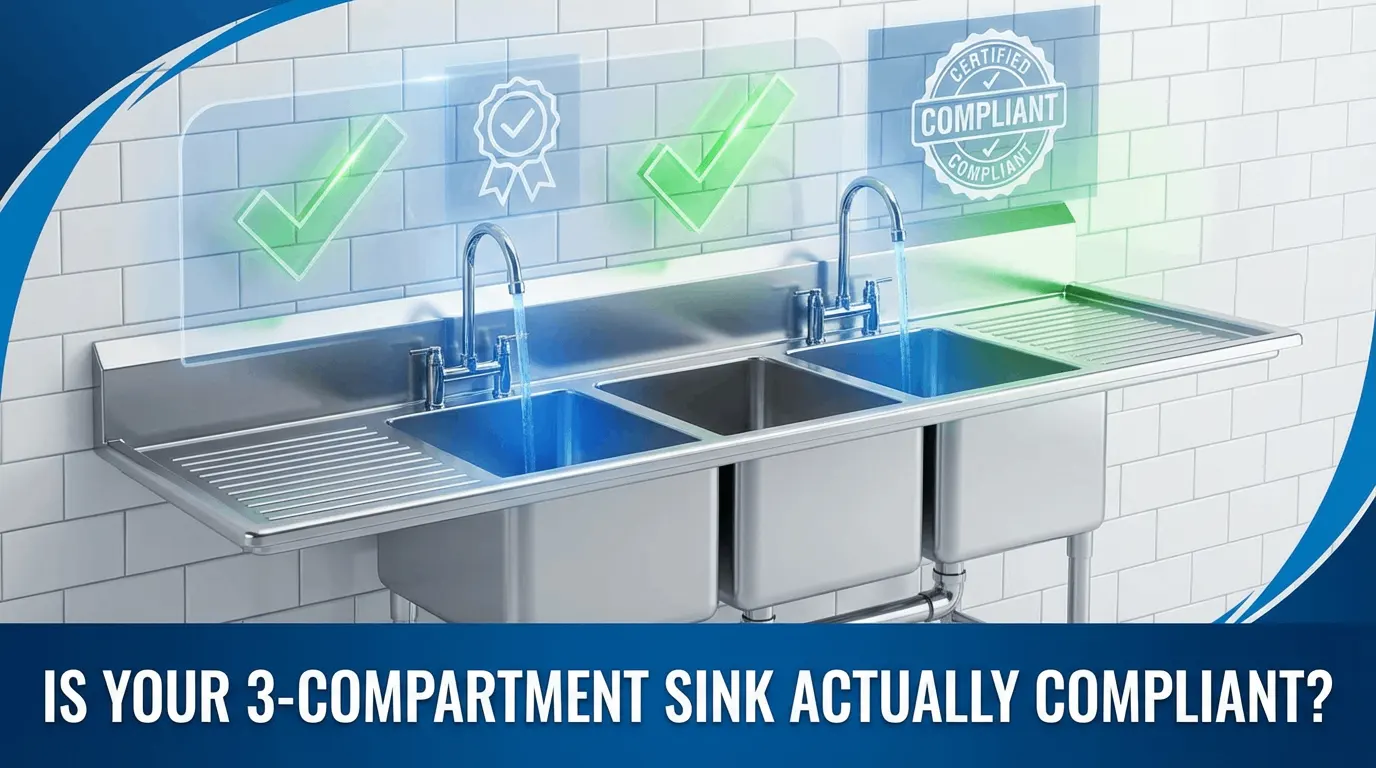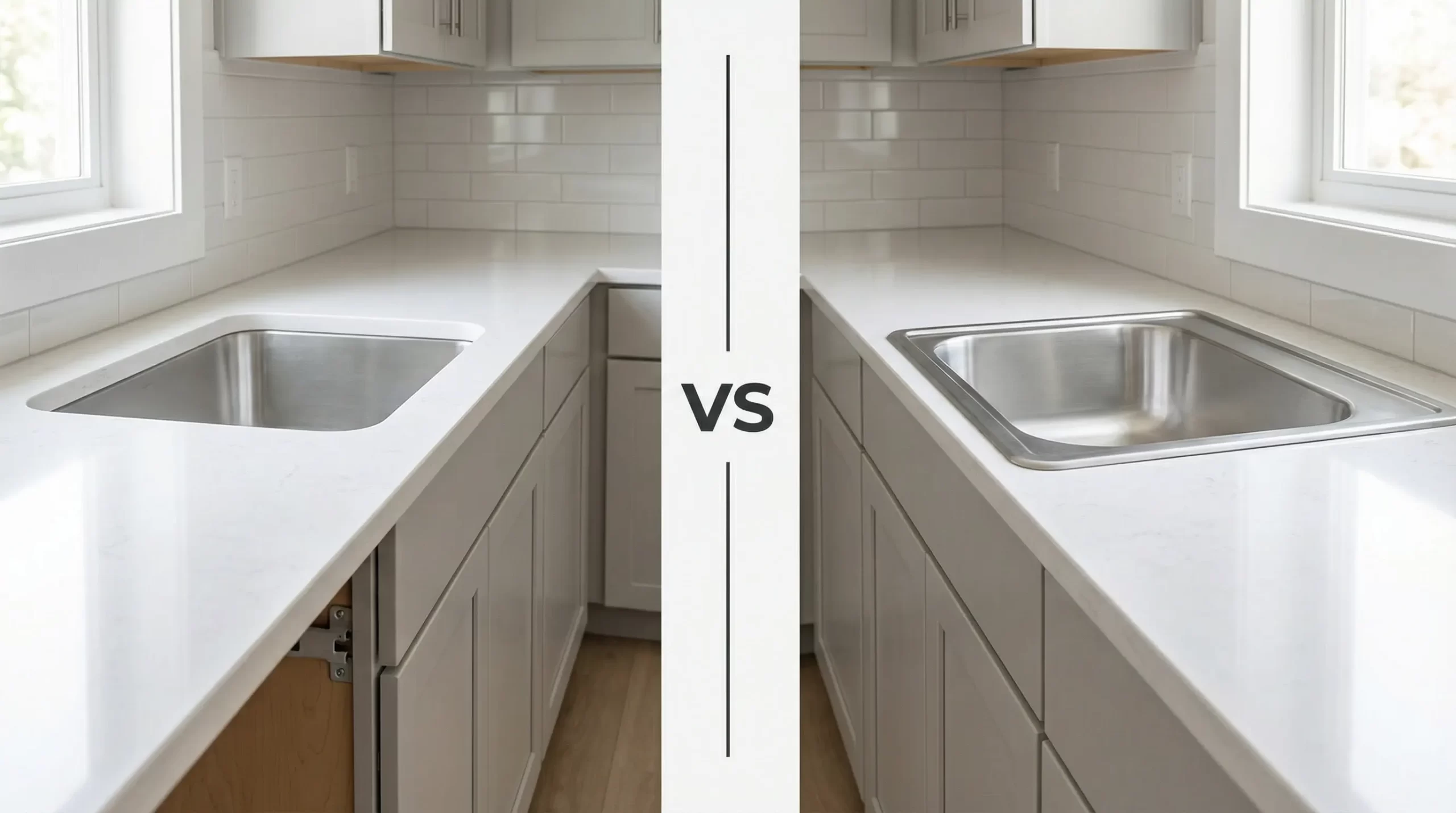Is Stainless Steel Good for a Laundry Sink
When you’re on the hunt for the perfect laundry sink material, stainless steel totally steals the show. It’s tough as heck, super easy to clean, and just makes sense for everyday life. It handles the grind of daily use, stands up to harsh soaps, and doesn’t flinch at hot or cold water switches. Plus, it’s got this cool trick of fixing its own little scratches. Wiping it down is a piece of cake; one swipe and it’s shining like new. Sure, it might cost more upfront, but it lasts forever and barely needs any fuss, so it’s a no-brainer that saves you cash in the long run.
Characteristics of Stainless Steel Materials
You might picture ceramic or plastic when you think of laundry sinks, but stainless steel is crashing the party, and trust me, it’s for good reason. It’s got all the right moves to tackle the mess and madness of laundry day.
Corrosion Resistance
Stainless steel has this superpower: it doesn’t rust easily. The trick is chromium, which chills in the steel and teams up with air to slap a thin, invisible shield on the surface. Think of it as a force field against water, soaps, and chemicals.
Take 304 stainless steel, with its 18% chromium, the kind you see all over homes. You can dump bleach-loaded detergent in there daily, and it won’t blink: no rust, no funky colors. Even better, if that shield gets a nick, it heals itself as long as air’s around. That makes it a champ for damp spots like laundry rooms or kitchens.
It can take some wild stuff too. Spill some acidic cleaner or alkaline gunk by mistake? No sweat, it laughs that off. That hardcore toughness makes a stainless steel laundry sink a long-hauler, perfect for homes or even big-shot commercial gigs.
Strength and Durability
Stainless steel is a beast compared to plastic or ceramic, with the muscle to take a beating. Imagine a laundry basket packed with sopping wet clothes or all that elbow grease you put into scrubbing stains. Most sinks would cry uncle, but a stainless steel laundry sink just says, “Bring it on!” No dents or warping, even after years of action.
Stuff happens, like banging a detergent bottle or a hanger against it. Plastic or ceramic would be toast, scratched or cracked in a heartbeat. Stainless steel just smirks and says, “Is that all you got?” It looks sleek and shiny but is built like a tank for those everyday oops moments.
It’s a pro at handling hot-and-cold switches too. Soaking in steamy water in winter, rinsing with icy stuff in summer, other materials might crack or twist under that, but stainless steel stays chill. Its low thermal expansion keeps it steady, so pour whatever temp you want; it won’t quit on you.
Easy to Clean
Stainless steel is so slick that dirt doesn’t stand a chance; there’s nowhere for it to hang out. Laundry day chaos, soap suds, detergent globs, and lint flying everywhere stick to plastic or ceramic like glue. But a stainless steel laundry sink? Swipe it with a damp cloth, and boom, it’s good as new.
Stubborn stuff like water spots or dried-up detergent? No worries. Hit it with a neutral cleaner or try this: sprinkle some baking soda, add a drop of water for a paste, and rub it lightly with a soft cloth, and poof, it’s gone. For the real toughies, mix equal parts vinegar and water, spray it, let it sit a bit, then wipe. Works every dang time.
That easy-clean magic keeps germs and mold out of the picture too. It’s seamless and doesn’t soak up junk, which is clutch since laundry zones are already damp central. No nasty sink means no worries about your clean clothes getting funky.
It’s got this oil-repelling trick up its sleeve too. Splash some greasy stain remover or oily mess on it? It won’t sink in; just a dab of dish soap and warm water, and it’s history. That “nothing sticks” vibe makes it a breeze to keep up, whether you’re doing a quick once-over or a deep scrub. It’s like your sink’s got your back, no matter what laundry throws at it.

Stainless Steel in Laundry Sinks
Stainless steel laundry sinks are popping up all over, from home laundries to big commercial joints, and it’s no mystery why. They’re the perfect mix of “gets the job done” and “won’t break the bank,” giving you a solid, forever kind of fix for laundry woes.
Popular Design Types
Stainless steel laundry sinks come in all flavors, so you’re covered no matter what you need. Single-basin is the classic pick, great for tight spaces. It’s no-frills, straight-up useful, and awesome for wrestling big stuff like sweaters or blankets. Double-basin is the move if you’re all about multitasking: soak on one side, scrub collars or cuffs on the other, a total time-saver.
Fancier ones toss in bonuses like drainboards or shelves. Drainboards are dope for air-drying socks or delicate stuff, and shelves keep your soap and brushes right there, laundry nirvana. Some even rock splash guards, about an inch high, to keep water from soaking your floor or counter, perfect if you’re a hardcore scrubber.
Commercial folks love the custom vibes. We’re talking huge sinks, 31 inches wide, up to 39, with over a foot of depth, for slamming through piles of clothes. Some have a mini washboard on one side of a double sink or a detachable filter to snag lint and junk. It’s all about making life easier.
Little extras seal the deal. Rounded edges so you don’t bang your hands, sloped bottoms to ditch standing water, these tweaks make it a blast to use, not just a tool.
Installation and Maintenance
Putting in a stainless steel laundry sink is no rocket science, with two main vibes: undermount or top-mount. Undermount sits snug under the counter, all sleek and smooth. No lip to trap crud, so cleaning’s a snap; folks love it for that modern, tight look in laundry rooms or kitchens.
Top-mount just plops on the counter and seals up. It’s clutch for spots like commercial laundries or temp setups where you might swap it out later. Breaks or needs a glow-up? Yank it, wipe the counter, drop a new one in, done and done.
Sealing’s the name of the game when you install. Undermount or top-mount, slap on top-notch waterproof sealant around the edges; leaks mean mold or a trashed counter, so don’t slack. For undermount, it also keeps the sink locked in, no wobbling.
Maintenance is a cakewalk with stainless steel. Damp cloth swipe keeps it fresh. Tough stains? Neutral cleaner or baking soda paste, just don’t go harsh and mess with that chromium shield. Peek at the drain and pipes now and then to dodge clogs, and you’re golden for years.
Cost-Benefit Breakdown
Yeah, a stainless steel laundry sink might sting more upfront than plastic or ceramic, but it’s a slam dunk long-term. It’s so tough you won’t be swapping it out every few years; think a decade or more. Plus, easy cleaning and low fuss save you dough on fancy cleaners or fix-it calls.
Check this: plastic sinks might tank every 3-5 years, fading, cracking, the works. Stainless steel’s in it for 15-plus, and you can buff out scratches like it’s nothing. Fewer replacements, less headache, no install redo costs.
Cleaning’s a money-saver too. That slick surface laughs off stains and water spots; just wipe it. Stubborn junk? Baking soda or vinegar, cheap stuff, handles it; no splurging on special potions. It’s chill, budget-friendly upkeep that keeps it rolling.
Bonus points: it’s green. 100% recyclable, less trash, vibes with that eco-life. Plastic sinks? Landfill bound, no planet love there. So if you’re into smart, earth-friendly picks, stainless steel’s your guy, good for your cash and your conscience.

Stainless Steel vs. the Rest
Picking a laundry sink means pitting stainless steel against ceramic, plastic, and composites. They’ve all got their quirks; here’s the scoop to help you nab the right one.
Stainless Steel vs. Ceramic
Ceramic laundry sinks have that old-school charm and smooth feel that tons of people dig, perfect for vintage or farmhouse fans. Glossy finish, fun colors, they mesh with any counter for a warm, fancy vibe. But durability and real-world grit? Stainless steel’s got it beat hands-down.
Ceramic’s pretty, but it’s a lightweight in the tough department. Heavy stuff or a good whack can crack or smash it. Drop a hanger or detergent jug in there, and you’re looking at chips or a busted sink, big hassle, bigger bill. Stainless steel’s harder and takes those hits like a champ, no damage, no drama.
Ceramic’s smooth, sure, but it scratches and stains over time. Steel wool or a coffee spill leaves marks that stick like glue. Stainless steel’s chromium layer fights rust and wipes clean like nothing happened.
Cleaning ceramic is a chore; special stuff to keep it glossy. Stainless steel laundry sinks? Damp cloth, done. Soap or lint from laundry? Swipe it off. Hard water stains? Vinegar-water mix, spray, wait, wipe, gone.
Stainless Steel vs. Plastic
Plastic laundry sinks win fans with their featherweight build and cheap price, great for tight wallets or short-term gigs. Super easy to slap in, DIY friendly, perfect for renters or quick fixes. But staying power and cleanliness? Plastic’s out of its league next to stainless steel.
Plastic’s soft, warps, scratches, and fades fast. Plop a wet laundry basket on it, and the bottom might cave, screwing up the flow. Worse, if it bends, water pools, annoying as heck.
Scratches galore too. Metal brush or rough scrubber leaves ugly lines that trap dirt and germs, making it a pain to clean. Sun or heat, like on a porch, turns it yellow, brittle, or cracked, killing its run quickly.
Germs love plastic; it soaks up stains and bugs, especially with detergents. Cheap stuff might even leak nasty junk with bleach or harsh soaps, bad news for you and your laundry. Stainless steel’s non-porous, stays clean, no creepy surprises.
Stainless Steel vs. Composite Materials
Composite sinks, like quartz or fake stone, are hot right now with cool colors and patterns. Stone bits plus resin fake marble or granite, giving your laundry room some swank. But toughness and upkeep costs? Stainless steel’s still the boss.
Composites are solid but not bulletproof. Drop a heavy wet laundry load, and you might get cracks or chips, hard to patch up, maybe a full swap. Stainless steel’s strength and flex take the hits, no cracks, even after years.
Edges and seams on composites can flake out, loosen or leak over time, trashing your counter. Stainless steel’s one-piece build skips that mess, handling daily chaos no prob.
Cleaning composites sucks; they grab stains like oil or juice, and those marks stick, even with special cleaners, dulling the shine. Stainless steel? Stain-repellent, wipe it, and it’s gleaming, no sweat.
Heads-Up and Hot Tips
Stainless steel laundry sinks are beasts for durability and easy care, but you’ve gotta watch a few things. Pick smart, use it right, and keep it up; your sink’ll stay slick and hang out for ages.
Picking the Right Thickness
Stainless steel laundry sinks run 0.8mm to 1.2mm thick; the thicker’s tougher. A 1.2mm sink laughs at heavy stuff and bangs, killer for busy homes or commercial spots. Wet clothes basket, random knocks, it’s all good, built to last.
Match it to your vibe and cash. Most homes rock a 1.0mm sink, tough enough without bending, wallet-friendly. High-traffic or commercial? 1.2mm’s your dude, handles the rough stuff easily.
Thicker means quieter too. They slap on sound pads or coatings to hush water noise. 1.2mm’s chill when draining; 0.8mm might clang a bit, peaceful types, take note.
Dodging Scratches and Wear
Stainless steel’s hardness is 150-200HV, beats plastic and ceramic, but slack off, and it’ll scratch. Steel wool or rough tools leave tiny marks, ugly and germy.
Stick to soft cloths or sponges for the daily grind. Soap suds or lint? Damp cloth, gone. Stubborn stains? Neutral cleaner or baking soda: sprinkle, splash water, make a paste, rub softly, bam, clean.
No chopping in the sink, huge scratch saver. Cutting veggies or meat in there leaves knife scars, gross and germ-friendly. Cutting board’s your buddy, keeps it smooth and food safe.
Light scratches? Stainless steel polish fixes ‘em. Little gritty bits buff marks out, shine it up. Dab it on, rub with a soft cloth till it’s gone, DIY win, sink’s fresh again.
Regular Maintenance and Cleaning
Regular love keeps your stainless steel laundry sink sparkling; it’s the secret sauce. Wipe it weekly with a damp cloth, nixes stains and spots before germs party. Soap or lint? One swipe, clean, quick, easy, sanitary.
Hard water crud? Vinegar and water, 50/50, spray it, chill a few, wipe. Breaks down chalky junk, sink’s gleaming. White gunk on edges or bottom? Spray, wait 5-10, soft cloth, gone, simple.
Peek at the drain and pipes regularly, no clogs allowed. A small brush or pipe tool clears lint and goo. Slow drain? Hot water flush melts grease, keeps it flowing. Weekly drain brush keeps it smooth sailing.
Check the counter seam too; sealant’s gotta hold. Cracked or peeling? Swap it fast, leaks mean mold or wrecked counters. Yearly once-over, if it’s old, scrape it off, slap on fresh waterproof sealant, keeps it tight and dry.






